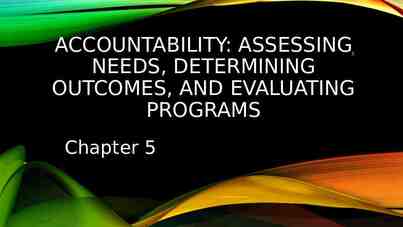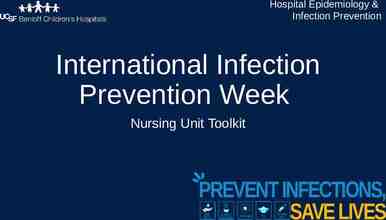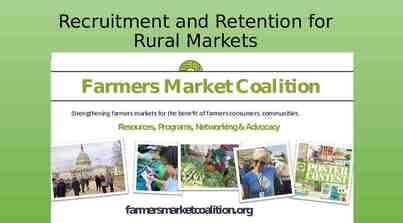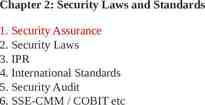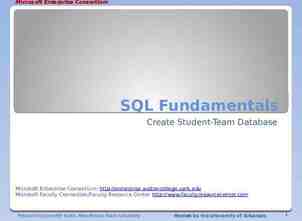HRP Response Analysis and Prioritization Webinar 14:00 – 15:30
36 Slides1.46 MB

HRP Response Analysis and Prioritization Webinar 14:00 – 15:30 (CET) 15 September, 2020

Agenda 1. Background and Introduction 2. How the HNO informs the HRP in HPC 2021 3. Formulation of strategic and specific objectives Example from Somalia 4. Response analysis and prioritization 5. Estimation of the people targeted 6. Reminder of timelines 7. Q & A

1. Background and Introduction

Guidance The HPC Step by Step Annotated Templates HNO HRP Complementary guidance (OPAG endorsed) JIAF Guidance Risk Analysis and Projections Response Analysis and Prioritization Guide Disability Inclusion Gender Analysis Additional: Cash, AAP, PSEA, draft HPC FAQ

2. Working with the 2021 HNO

Working with the 2021 HNO PiN / Severity / Magnitude Vulnerable groups and geographic areas identified Trends and projection Causes and driving factors of needs People’s own priority needs

3. Formulation of strategic and specific objectives

HRP – steps Step 5. - Define the scope of the HRP and formulate initial objectives 5.1 Determine the scope of the HRP based on the results of the analysis of needs and risks 5.2 Draft preliminary (inter-sectoral) strategic and specific objectives

Formulation of strategic and specific objectives Formulation and eventual finalization of Strategic and Specific objectives can be summed up in three steps: 1) Broad formulation of strategic objectives based on HNO 2) Specific objectives are then formulated for each strategic objective based on the review and selection of interventions 3) Fine tune the initial Strategic Objectives once specific objectives are finalized including a quantification of the target groups and clear response approach

Definition of strategic and specific objective Strategic objectives 1) High-level 2) Targeted 3) 4) 5) 6) Outcome-oriented Attainable Measurable Time-bound Specific objectives 1) Detailed and disaggregated 2) Complementary and synergistic (Targeted) 3) 4) 5) 6) Outcome-oriented Attainable Measurable Time-bound

Linkages with cluster/sector objectives Cluster/ sector objectives can be part of intersectoral specific objectives or stand-alone sectoral specific objectives Clusters may be involved in various specific objectives, either under the same strategic objective, or under different strategic objectives.

Examples Strategic Objectives Crisis-related morbidity and mortality of [number] of [target population] in [geographical area] are reduced by [X and Y percentage respectively] by [date]. Supporting Specific Objectives Critical food insecurity levels for [number] [population groups] reduced below IPC levels 4 and 5. Prevalence of global acute malnutrition among children under the age of 5 years in [geographical areas] is below [percentage] by [date]. Outcome indicators Indicator Registry Mortality rate of [target population] Under-5 mortality rate Incidence for selected diseases relevant to local N-028 context / morbidity rate of [target population] H-R.1 Prevalence of global acute malnutrition in children under the age of 5 years in [geographical areas]. IR N-002 Outcome indicators Number of people in IPC Phase 4/5 Percentage/number of people with poor or borderline food consumption score Prevalence rate of global acute malnutrition in children under the age of 5 years in [geographical areas]. IPC IR N-002

Somalia - From Critical Problem to . CRITICAL PROBLEM PiN VULNERABLE GROUP Critical problems related to physical and mental well-being Acute malnutrition and health outbreaks and mental illness continue to put at risk the lives of children and the most vulnerable people 1M - IDPs and 1.4M vulnerable HHs non-displaced at risk of health outbreak and mental illness 1.08M - children 5 (GAM) 178,000 - children 5 (SAM) 270,000 Pregnant and lactating women Women in child bearing age Children 5 Older people People with disability Women and Girls Men and boys Critical problems related to living standards Under-development, conflict, political instability, displacement and climate shocks continue to put pressure on IDPs, rural and urban households in accessing basic services 3.4M Rural (2M) and Urban population (1.4M) 1.7M Displaced population School Age Children (1.3M) Children 5 in need of preventative nutrition intervention PLW (830,000) older people People with disability Women and Girls Men and boys Critical problems related to living standards In Somalia severe acute food insecurity continues to affect many vulnerable households who struggle to access food sources as adverse climatic and non-climatic shocks persisted in 2019 1.08M - people leaving in rural areas 259,000 - people leaving in urban areas 749,000 - displaced people Vulnerable urban households Displaced population Children 5 and School age children Pastoralist Agro-pastoralist and Riverine farming communities

.Strategic Objectives Strategic Objectives #1: Mental and health wellbeing Specific Objectives #1: Mental and health wellbeing Strategic Objectives #2: Living Standards Reduce the prevalence of 1. acute malnutrition and health needs affecting more than 1.8 million people by the end of 2020. 2. 3. Reduce the prevalence of global acute malnutrition among 801,000 children under 5 and 202,000 PLW across 68 districts to below 13 per cent by the end of 2020 Decrease the excess mortality rate from crisisdriven diseases and outbreaks among 1.6 million people including 760,000 IDPs and 855,000 non-IDPs by 5 per cent by the end of 2020. Decrease excess morbidity rates from crisisdriven diseases and outbreaks among 1.6 million including 760,000 IDPs and 855,000 non-displaced people by the end of 2020. Specific Objectives #2: Living Standards Meet the basic needs of 1. 3 million people including 1.6 million non-IDPs and 1.4 million 2. IDPs across 74 districts by the end of 2020 3. 4. Scale up and provide WASH, education, health, nutrition, shelter and NFIs services to 1.6 million non-IDPs by the end of 2020. Scale up and provide CCCM, WASH, education, health, nutrition, shelter and NFIs services to 1.4 million people in established IDPs sites across 68 districts by the end of 2020. Improve access to food for 2 million people including 950,000 IDPs and 1.1 million nonIDPs facing severe acute food insecurity Protect livelihood and related food sources for 1.6 million farmers, agro-pastoralists, pastoralists and IDPs across Somalia through emergency agriculture, livestock and other livelihood support in line with their livelihood and seasonality.

4. Response Analysis and Prioritization

Step 6 Conduct Response Analysis 6.1 Review appropriateness, relevance, and feasibility of different responses 6.2 Articulate inter-sectoral and multi-sectoral response approaches based on the results from the response analysis, and prioritize (based on severity, time-criticality, and complementarities/ synergies) 6.3 Estimate target population number

Step 6 Conduct Response Analysis Definition

Step 6 Conduct Response Analysis Definition Response analysis is a joint inter-sectoral process that facilitates the identification of appropriate, relevant and feasible interventions and modalities to respond to the humanitarian needs identified in the HNO. Response analysis consists of formally reviewing the range of possible interventions to address identified needs in order to select those interventions which will meet the identified needs in the most effective and efficient way.

Step 6 Conduct Response Analysis HNO initial set of strategic objectives & specific objectives Review interventions: Appropriateness Relevance Feasibility

Step 6 Conduct Response Analysis

Step 7 Finalize strategic and specific objectives and indicators 7.1 Finalize formulation of strategic and specific objectives 7.2 Identify indicators to monitor strategic and specific objectives 7.3 Cluster/sectors develop response plans and define cluster objectives 7.4 Sub-national and/or government consultation/review draft HRP response parameters 7.5 Present and seek endorsement by the HCT of the strategic objectives and approach, number of people targeted, and response monitoring framework

Step 7 Finalize strategic and specific objectives and indicators HNO initial set of strategic objectives & intersectoral/sectoral specific objectives Review interventions & modalities: Appropriateness Relevance Feasibility Adjust and finalize the formulation of specific and strategic objectives (see “Response Analysis and Prioritization Guide”, Annex 1)

HRP 2020 Quality Scoring Expected Improvements (June 2019) Explicit rationale for who/what/locations are prioritized for inclusion in HRP, as based on HNO. Clear boundaries prioritized HRP. 100% of HRP is prioritized and to be implemented. Timesensitive interventions but no static priorities. Improved Coherence: Cluster plans framed by inter-sector objectives and underpinning response approach/targets. In turn, projects systematically linked to Cluster activities/targets (HPC tools). Observations (May 2020) Significant uptake on what, who, and where is prioritized. Documentation and rationale remain as challenging. Boundaries are clearer than previous years. Very few HRPs indicated time-criticality and no HRPs reported sequencing of priorities. Excluded groups and geographic locations often not presented Strategic and specific objectives guide and link to sector frameworks. More work is needed on response analysis and formulation of objectives.

5. Estimation of people targeted

What is targeting Various targeting approaches can be applied: Demographic targeting Geographic targeting Community-based targeting Self-targeting whereby people in need apply for assistance

Estimation of people targeted Approaches to sectoral targets - Sectors develop targets on the basis of partner project submissions and sum up project targets, or - Sectors establish initial targets at the outset of the project or activity development process and work with their partners to achieve these targets. Approaches to determine inter-sectoral targets: - Derived from sectoral targets if these represent different population groups, or - if the people targeted are the same, derive from the highest target for an activity in a given location

Estimation of people targeted Step 1: Identify the target population per Specific Objective Step 2: Identify the target population by Strategic Objective Step 3: Identify the total target population for the HRP Step 4: Ensure cluster targets are consistent

Estimation of people targeted Step 1: Identify the target population per Specific Objective Option 1: If contributing sector activities target different caseloads, possible to sum up activity targets.

Estimation of people targeted Step 1: Identify the target population per Specific Objective Option 2: If there is significant overlap between different contributing activities, final target will consist of the highest activity target.

Estimation of people targeted Step 2: Identify the target population by Strategic Objective Option 1: If Specific Objectives have targets that can be distinguished, possible to sum up all of the targets.

Estimation of people targeted Step 2: Identify the target population by Strategic Objective Option 2: If Specific Objectives target the same population, he highest target by Specific Objective will serve as the target on groups in the same areas, or if there is significant overlap between them

Estimation of people targeted Step 3: Identify the total target population for the HRP The process continues to be the same as before – two options are given .

Estimation of people targeted Step 1: Identify the target population per Specific Objective Step 2: Identify the target population by Strategic Objective Step 3: Identify the total target population for the HRP Step 4: Ensure cluster targets are consistent

Timelines – a reminder

Timeline - GHO 11 September – mail from USG Lowcock to all staff with guidance and timeline 30 September - Agencies and GCC inputs on 2020 achievements (whole 2020 projections ideally) 9 November – Hard deadline for field inputs (narrative and figures) for Part 2 (OCHA COs) 16 November – hard deadline for RO inputs (narrative) for part 2 20-24 November – Green light by OUSG for whole document 30 November - Embargoed GHO goes to media 1 December – Launch of the GHO

End

